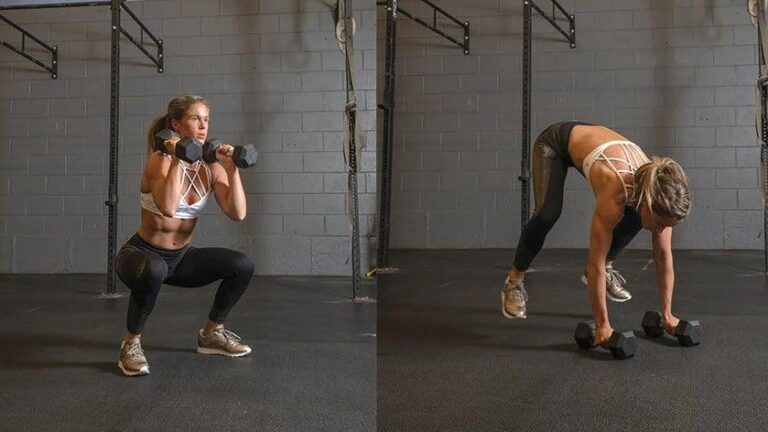In today’s fast-paced world, developing functional strength goes beyond just lifting heavy weights or sculpting muscles—it’s about enhancing your body’s ability to perform everyday tasks with ease and efficiency. Whether you’re carrying groceries, playing with your kids, or tackling manual work, functional strength helps you move better, reduce injury risk, and improve overall quality of life. In this article, we’ll explore practical tips to build real-world strength that supports your daily activities, empowering you to feel stronger and more capable in everything you do.
Table of Contents
- Understanding Functional Strength and Its Importance in Everyday Activities
- Incorporating Compound Movements for Maximum Efficiency
- Tailoring Your workout to Mimic Real Life Challenges
- Practical Recovery Strategies to Sustain Functional performance
- The Conclusion
Understanding Functional Strength and Its Importance in Everyday Activities
Functional strength is the foundation of physical performance that directly translates to your ability to handle daily tasks with ease and efficiency. unlike traditional strength training that focuses on isolated muscle groups, developing functional strength emphasizes coordinated movement patterns, balance, and core stability. This holistic approach ensures your body works as an integrated system, making activities like lifting groceries, climbing stairs, or playing with children less taxing and reducing the risk of injury.Building functional strength enhances overall mobility, joint health, and endurance, making everyday movements smoother and more controlled.
To harness the benefits of functional strength, focus on exercises that mimic real-life activities and engage multiple muscle groups concurrently. Incorporate movements such as squats,lunges,push-pulls,and rotational exercises into your routine to develop strength,coordination,and flexibility. Key benefits include:
- Improved posture and spinal alignment
- Enhanced core stability and balance
- Greater athletic performance and injury prevention
- Boosted metabolic rate through compound movement
Prioritizing functional strength in your fitness regimen pays dividends far beyond the gym — it equips you with the resilience and capability to thrive in everyday life.
Incorporating Compound Movements for Maximum Efficiency
Maximizing workout efficiency hinges on embracing exercises that target multiple muscle groups simultaneously. Compound movements like squats, deadlifts, and pull-ups not only save you time but also promote better coordination and functional strength by mimicking natural body mechanics.These exercises improve core stability, enhance joint integrity, and offer greater hormonal benefits compared to isolation movements.
Incorporating these into your routine can be straightforward with a few key approaches:
- Prioritize form: Proper technique safeguards against injury and ensures muscles work as intended.
- Progress gradually: Increase weights or reps methodically to build strength without overstraining.
- Mix movement patterns: Balance pushing, pulling, hinging, and squatting to develop thorough strength.
- Use functional equipment: Dumbbells,kettlebells,and resistance bands add versatility and challenge to compound exercises.
Tailoring Your Workout to Mimic Real Life Challenges
When designing a workout routine with real-world applications in mind, it’s crucial to focus on movements and exercises that replicate the demands of daily activities. Instead of isolating muscles in traditional machines, prioritize compound movements that recruit multiple muscle groups and challenge your body in a coordinated manner. Think about lifting, pushing, pulling, carrying, and rotating—these actions are central to everything from moving furniture to playing with your kids. Incorporating functional tools like kettlebells, sandbags, or resistance bands can add variability and simulate the unpredictable nature of everyday tasks.
To truly enhance functional strength, your workouts should embrace diversity and adaptability.Consider including exercises that improve balance, stability, and proprioception to better prepare your body for sudden shifts in weight or terrain. Some effective strategies include:
- Multi-directional lunges and squats to mimic reaching and stepping motions
- Farmer’s carries which build grip strength and core stability simultaneously
- Rotational twists with medicine balls to develop dynamic core control
- Single-leg deadlifts to improve unilateral strength and balance
By consistently integrating these elements, you not only improve your performance in workouts but also create a resilient, injury-resistant body that functions seamlessly in everyday life.
Practical Recovery Strategies to Sustain Functional Performance
Optimizing recovery is as crucial as the training itself when aiming to maintain peak functional performance. incorporating active recovery techniques such as light jogging, swimming, or mobility drills helps facilitate blood flow and nutrient delivery to fatigued muscles without overstressing them. Equally important is ensuring consistent and restful sleep, as this natural repair process fuels muscle regeneration and supports cognitive function. Additionally, focusing on proper hydration and balanced nutrition—rich in protein, antioxidants, and anti-inflammatory foods—creates the foundation for effective tissue repair and sustained energy levels.
Practical strategies for recovery extend beyond the physical and include mental and emotional balance, which is essential for long-term adherence to functional strength routines. Techniques such as mindful breathing, meditation, and progressive muscle relaxation can reduce stress hormone levels, enhancing recovery quality.Implementing structured rest days and listening to your body’s cues can prevent overtraining and burnout.consider integrating these approaches into your weekly routine to build resilience and promote sustainable gains in both strength and overall well-being.
The Conclusion
Building functional strength is more than just lifting heavier weights—it’s about enhancing your ability to perform everyday tasks with ease and confidence. By incorporating practical exercises that mimic real-life movements, focusing on proper form, and prioritizing consistency, you set yourself up for lasting physical resilience and improved quality of life. Remember, the goal is to move better, feel stronger, and stay injury-free. Start small, stay committed, and watch how functional strength transforms not only your workouts but your daily routine as well. Here’s to building strength that truly serves you—one purposeful rep at a time.

